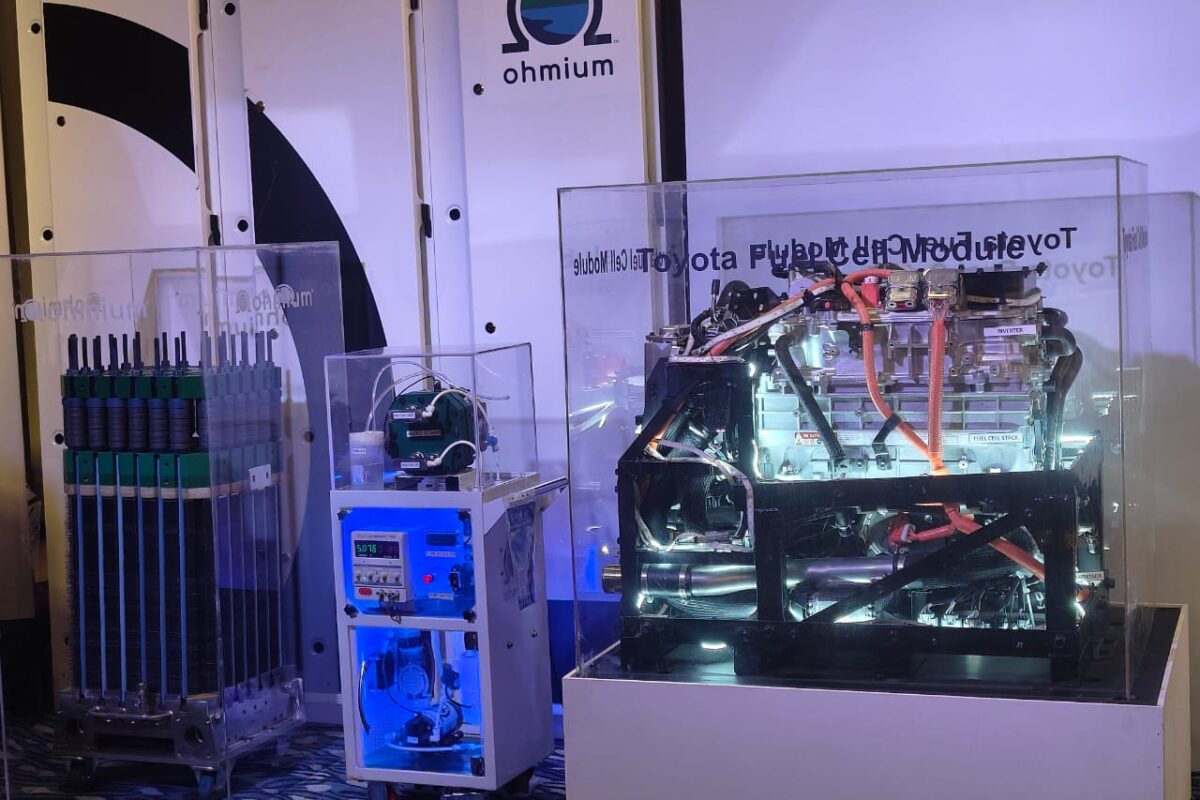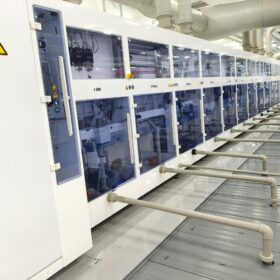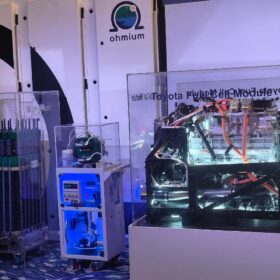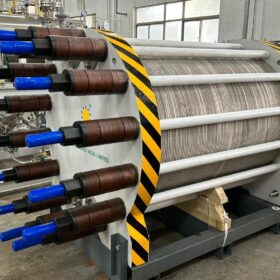The journey toward a net-zero future is no longer just a matter of ambition—it hinges on precision, adaptability, and actionable insights. As companies worldwide face mounting pressures from stricter regulations, investor demands, and evolving consumer priorities, managing carbon footprints has shifted from a mere compliance task to a critical strategic priority.
Enter artificial intelligence (AI), a technology that can think and reason like a human when equipped with the right data. Capable of transforming raw, unstructured data into structured, meaningful information, AI can analyze trends from publicly available sources and deliver clarity where ambiguity once reigned. Whether it’s distinguishing your business among competitors, understanding their performance, or learning from their triumphs and missteps, AI empowers you to do so with ease. Thoughtfully applied, AI doesn’t just tackle carbon—it redefines how businesses measure, mitigate, and master their environmental impact across waste, water, and all sustainability metrics, grounding corporate sustainability in data integrity, actionable trend-spotting, and auditable results rather than empty promises.
The backbone of trust: Data quality
No sustainability strategy holds weight without reliable data. Corporate carbon footprints span complex supply chains, energy grids, and operational nuances, often leaving gaps that manual tracking struggles to fill. AI steps in by sifting through vast datasets, energy bills, procurement records, transportation logs, to stitch together a coherent picture. Unlike traditional methods prone to human error or incomplete reporting, AI thrives on consistency. It flags discrepancies, such as a supplier’s underreported emissions or a misclassified energy source, ensuring the numbers reflect reality. AI savvy tools can significantly enhance the accuracy of energy and emissions data, reducing errors compared to manual processes. High-quality data isn’t just a technical win; it’s the foundation for credible commitments and defensible progress.
Seeing the unseen: Trends that shape strategy
Beyond cleaning data, AI uncovers patterns that human analysis might overlook. Imagine a multinational manufacturer noticing a gradual uptick in emissions from a specific region. Where a spreadsheet might bury this shift, AI drills down—correlating it to, say, a new subcontractor’s fossil-fuel-heavy processes or seasonal production spikes. This isn’t guesswork; its trend analysis is rooted in real-time insights. The World Economic Forum says that firms leveraging predictive analytics cut emissions by up to 15% by 2030 by preempting inefficiencies. The ability to anticipate rather than react turns carbon management into a proactive pursuit, aligning sustainability with business resilience.
Pinpointing the culprits: Emissions hotspots
Not all emissions are equal, nor are they equally manageable. A critical advantage of AI lies in recognizing hotspots—those high-impact areas where intervention yields outsized results. Picture a logistics company with a sprawling fleet: AI can analyze fuel consumption, route efficiency, and vehicle age to spotlight the 20% of trucks driving 80% of emissions. This precision avoids the scattershot approach of blanket policies, focusing resources where they matter most. Targeting the right levers amplifies impact without exhausting budgets or bandwidth.
Raising the bar: Benchmarking for accountability
Sustainability isn’t a solo sport—context matters. AI enables corporations to benchmark their sustainability performance against peers, industry standards, or even their own past metrics. By pulling anonymized data from public disclosures or sectoral databases, algorithms reveal whether a company’s 5% emissions drop is a triumph or a lag when competitors achieve 10%. This isn’t about shaming; it’s about clarity. Transparent comparisons sharpen focus, pushing businesses to innovate rather than coast on incremental gains.
The audit trail: Trust through traceability
Regulators and stakeholders no longer settle for glossy reports—they demand proof. AI transforms carbon management into an auditable process, logging every data point, calculation, and assumption. When a company claims a 10-tonne CO2 reduction from a renewable energy switch, AI can trace it back to the utility contract, grid mix, and usage logs. This granularity matters: institutional investors now prioritize verifiable emissions data over narrative pledges. An auditable system doesn’t just satisfy compliance; it builds trust, turning sustainability into a currency of credibility in a skeptical world.
Beyond numbers: A paradigm shift
AI’s role in sustainability management extends past technical feats—it reshapes how organizations think. When emissions data becomes reliable, trends predictable, hotspots actionable, benchmarks clear, and audits seamless, sustainability moves from the periphery to the core of decision-making. Boards no longer debate whether to act but how fast and how far. Executives now view carbon reduction as a competitive edge, not a cost center. This shift reflects a broader truth: technology, when paired with intent, rewires priorities.
Charting the Green Horizon: AI as the compass for decarbonisation
AI’s transformative potential in corporate sustainability extends beyond managing emissions to strategically guiding organizations toward the most effective decarbonisation pathways. Having the potential to integrate large datasets—such as energy consumption, supply chain logistics, and sectoral benchmarks—AI can evaluate multiple decarbonisation strategies, identifying which align best with a company’s operational realities and sustainability goals. For instance, it can assess whether electrifying a fleet or optimizing supply chain routes offers the greatest emissions reduction for a logistics firm, factoring in costs, infrastructure readiness, and emissions impact. Simultaneously, AI pinpoints available solutions, matching them to identified hotspots—like recommending renewable energy contracts for high-emission facilities or smart grid technologies for energy-intensive operations—drawing directly from real-time market data and technological capabilities.
The road ahead: Scalability meets nuance
The promise of AI isn’t uniform—context dictates its impact. Small enterprises might use it to streamline basic reporting, while global giants deploy it to untangle sprawling supply chains. Yet challenges loom: data privacy, algorithmic bias, and access inequities could widen gaps between leaders and laggards. The World Economic Forum warned in 2025 that without standardized frameworks, AI’s sustainability gains might fragment. Still, the trajectory is clear. As computational power grows and datasets deepen, AI’s ability to refine sustainability management will only sharpen, offering tools that scale from factory floors to corporate headquarters.
A new lens on progress
Corporate sustainability has long wrestled with ambiguity—vague goals, patchy data, and siloed efforts. AI cuts through the noise, delivering precision where it’s needed most. It’s not about replacing human judgment but amplifying it with insights that manual systems can’t match. From ensuring data integrity to spotlighting inefficiencies, mapping trends to enabling audits, this technology offers a blueprint for accountability at scale. The future of global sustainability hinges on such clarity—where every tonne of carbon saved is measured, understood, and built upon. For corporations ready to lead, AI isn’t a distant horizon; it’s the lens through which progress comes into focus.
The views and opinions expressed in this article are the author’s own, and do not necessarily reflect those held by pv magazine.
This content is protected by copyright and may not be reused. If you want to cooperate with us and would like to reuse some of our content, please contact: editors@pv-magazine.com.








By submitting this form you agree to pv magazine using your data for the purposes of publishing your comment.
Your personal data will only be disclosed or otherwise transmitted to third parties for the purposes of spam filtering or if this is necessary for technical maintenance of the website. Any other transfer to third parties will not take place unless this is justified on the basis of applicable data protection regulations or if pv magazine is legally obliged to do so.
You may revoke this consent at any time with effect for the future, in which case your personal data will be deleted immediately. Otherwise, your data will be deleted if pv magazine has processed your request or the purpose of data storage is fulfilled.
Further information on data privacy can be found in our Data Protection Policy.